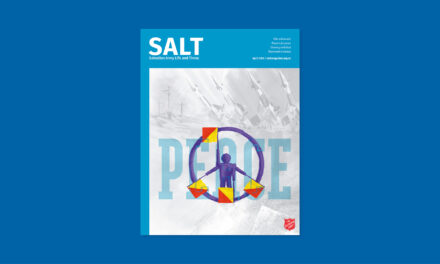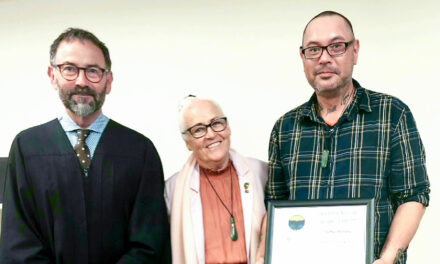
Be the Peace

We are called as Christians to be peaceful people, but what does that look like? Holly Morton-Chong discusses the important differences between being peacekeepers and peacemakers, and how Jesus exemplified this in a radical way.
We know that Jesus is called the Prince of Peace, but often that can give us an idea of Jesus as this zen untouchable being who never took sides and never upset anybody. However, that is not the image of Jesus in the gospels. Jesus often did things that we might see as overturning the norms around him: healing on the Sabbath, refusing to pass judgment on the woman the Pharisees wanted to stone, or welcoming Zacchaeus—which led to his repentance and reconciliation with his community.
Often the instruction we ourselves are given around peace involves not quarrelling and remaining in everybody’s good graces. We are told to curate inner peace so that the outside world doesn’t trouble us. While these things aren’t negative by themselves, this view of peace minimises the active role that we are tasked with in ‘making peace’. We are called to this practice in our journeys of following Jesus, into the role of peacemakers (Matthew 5:9), rather than peacekeepers.
Peacekeeping and negative peace
Peacekeeping is the form we often think of when it comes to being ‘peaceful’. There is a strong emphasis on making sure everyone gets along, and directly avoiding anything that may lead to conflict or disagreement. However, peacekeeping also means that we give in and sacrifice our own wellbeing, or prioritise the peace of one party over another, to maintain the appearance of peacefulness externally.
In conflict resolution, this is what is referred to as negative peace. Negative peace is defined as the absence of violence and conflict. However, the ruling and enacting of negative peace is criticised as not enabling justice and fairness. Negative peace can look like simply separating two fighting children or taking ‘criminals’ off the street so that crime is reduced. The immediate outcome improves the situation, but there is no attention given to fixing the situation that caused the conflict in the first place.
An important thing to note about this form of peace, whether on a global or personal scale, is that it often results in the keeping of the status quo. If someone is being mistreated, then a peacekeeping stance will continue that mistreatment in order to not upset anyone else involved.
In cases of global conflict, the call that leaders make for peace is often a call for peacekeeping. As Irish poet, theologian and conflict mediator, Pádraig Ó Tuama says, ‘meeting in the middle is not peace, it is failure’. He explains that this middle ground can lead to the continued oppression of vulnerable groups if things simply return to how they were before the conflict.
Peacemaking and positive peace
Peacemaking, on the other hand, takes actionable steps to resolve both internal and external unrest in order to create true peace for others and for ourselves. Sometimes this may require facing conflict to come to a long-term solution for all parties.
In this case, what is being sought instead is positive peace. Positive peace is defined as reconciliation and restoration through the creative transformation of conflict. It considers social, economic and political factors that can lead to conflict and works with those involved to come to the best outcome for all. This would look like sitting down with the fighting children and taking the time to figure out why they are at odds with each other, and what can be done to help them be friends again.
The goal for peacemaking is always reconciliation; for things to be made better for everyone involved and to become closer to each other as a result. This won’t always happen, but our hope should be for an outcome that brings people together and results in a long-term peace that is forged by meeting the issues that create ‘un-peace’ head on.
The kingdom of God
The stories we read of Jesus as a peacemaker all have the possibility (and, in some cases, the reality) of upsetting someone or causing division between the people involved; however, in these instances Jesus spoke up and used his actions to bring peace to the lives of marginalised people and healing to communities. This doesn’t mean that everyone was happy with what he did, but Jesus always gave the people around the choice to come together and be reconciled in these movements of peace.
The kingdom of God is a kingdom of justice and peace; full true peace that leads us and others into wholeness. As disciples of Jesus, we are called to take the first step and reach out towards others in reconciliation to bring that kingdom to earth by seeking positive peace as peacemakers. This is the role we are tasked with.
There are times when we may understandably feel worried about how it may be received, and we may not always get it right, but when we prioritise the peace and justice of Jesus and commit to speaking truth in love (Ephesians 4:15) we can bring more life and more hope into spaces that others are afraid to speak up in.









